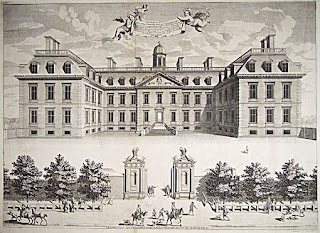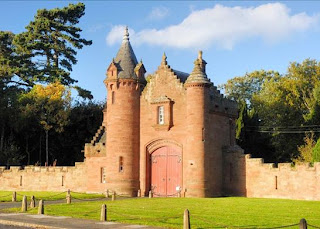Victoria, here, inviting you to come along on a visit to Belton House, sometimes chosen as the penultimate example of the perfect English Country House.
Belton House in
Clarendon House (drawing above) was very influential in Restoration architecture; but it lasted just a few decades before it was pulled down for the creation of several Mayfair streets.
In various remodelings during the centuries, Belton lost its first cupola, but it was replaced in the 1870’s when the 3rd Earl Brownlow restored the house to its original appearance.
Belton remained in the Brownlow-Cust family for three hundred years before Edward John
Peregrine Cust, 7th Baron Brownlow, gave the house to the National Trust in 1985. Above is the charming conversation piece portrait of the family by Philippe Mercier, c. 1725, showing the family in the park with the house in the background.
For more information in Belton House, click here. For more about the collections and interiors, click here. The park and gardens at Belton are beautifully laid out and maintained.
The Orangery, above and below, was designed by Sir Jeffry Wyatttville in 1811-19. Wyattville is probably best known as the architect for the George IV’s remodeling of Windsor Castle.
In the 1995 film version of Pride and Prejudice, Belton House played the role of Rosings, the estate of Lady Catherine de Bourgh. Quite a few important scenes were shot here, during which Darcy deepened his regard for Elizabeth. Below, he stands on the staircase, observing his beloved.
In this view of the staircase, the portrait of Adelaide, Countess Brownlow, can be seen at the top.
Above, the North Front of Belton House; below, the view of the garden from the steps.
Doesn’t this beckon you to explore? I am sure that, like Elizabeth Bennet, if I just ambled down this path, I might find my own Darcy waiting in the shrubbery. Well, we all can dream…





























